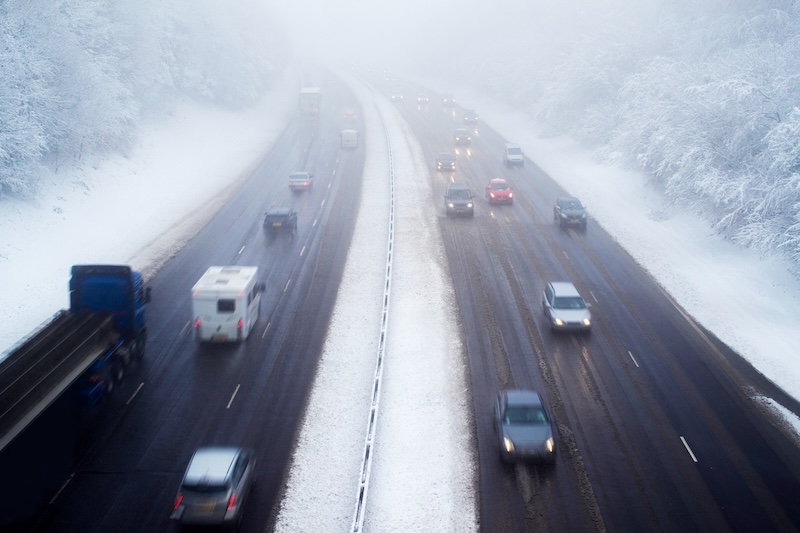Five top tips to keep you safe while driving in the winter

Leave 20 seconds between your and the car in front of you if the road is icy.
During winter, the weather can make it very difficult to drive. You have to take extra care on the road, or you could end up having an accident.
Theory Test Practice driving instructor Annie Winterburn urges drivers to be careful, offering five top tips for staying safe on the road this winter.
De-mist your windows
One of the most important things you can do happens before you set off on your journey. It may be tempting to start driving before your windows are fully clear, but this could be extremely dangerous. You should also pull over (as long as it’s safe) if your windows start to mist up while you’re driving.
How to de-mist your windows
There are several ways you can de-mist your windows.
1. Turn your heater up to maximum. Warm air holds more moisture than cold air so this will help clear your windows faster.
2. Turn on your air conditioning. Circulating the air in your car will help remove moisture.
3. Use the defroster. If your car is equipped with a defroster, this is the fastest way to demist your windows.
4. Direct the airflow. Direct airflow at your windows to demist them faster.
Check your fuel tank
You should always aim to keep your fuel tank at least half-full in winter. Some experts say that having an empty fuel tank can cause condensation to form on the inside walls of the tank. If the condensation freezes in the cold weather, it could cost a lot of money to repair the damage to your fuel tank.
Check your tyres
Having good tyres is vital to staying safe on the road. You’ll need decent tread on your tyres in order to grip the road well.
The law says you should have a minimum tread depth of 1.6mm, but your tyres become less effective once the tread depth is anything below 3mm.
You should also look for pressure changes and any cuts or punctures in your tyres while you’re checking the tread depth.
Use your lights
It gets dark early and light later in the winter, so it’s important that you use your headlights if it’s not 100% light outside.
Annie Winterburn says: “So many people forget to put their lights on when it’s dull or it’s starting to go dark. this means that other road users can’t see you as clearly, so they are more likely to pull out in front of you. Put your dipped headlights on when it’s starting to go dark, it’s dull or when it’s raining during the daytime.”
Keep the correct distance
In winter, when the roads are often damp or icy, you may need to keep a bigger distance between you and the car in front of you. If you’re required to emergency brake, or the car in front of you does so, a larger stopping distance can prevent an accident.
Top tip: if the roads are dry you should be two seconds away from the car in front of you. If it’s wet, that number goes up to four seconds. If it’s icy, as it may be in winter, that number goes up to 20 seconds.
If you’d like to know more, check out our guide to the best cars for driving in winter weather.


